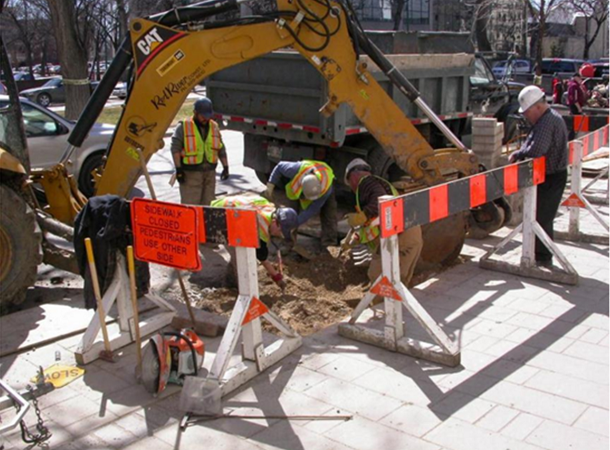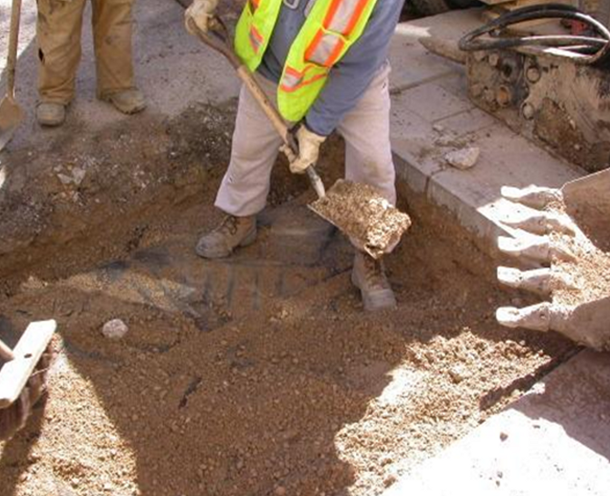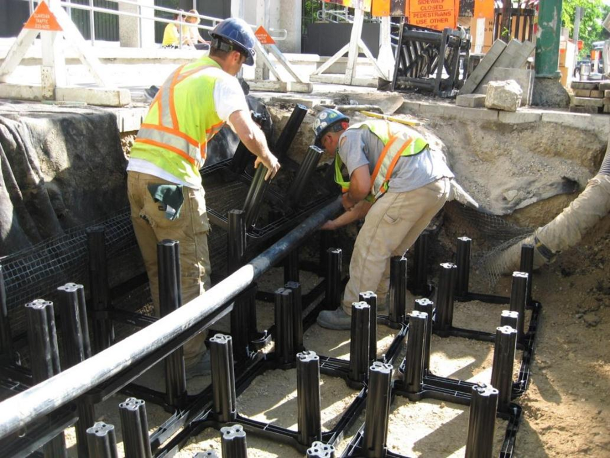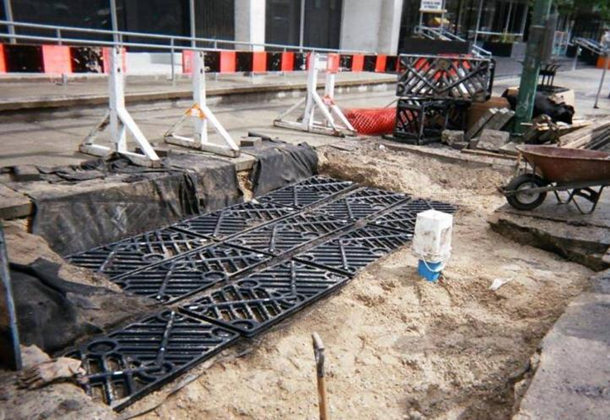
We previously took a look at how to do an emergency utility repair where a Silva Cell system is installed. Today we’ll look at how to do a planned repair.
Broadway Avenue, in Winnipeg, which went in the ground in July 2007, was one of our first Silva Cell installations. Several years later, they had a planned repair that they needed to make to a watermain. What follows is the simple method they used for excavating and removing the cells in the repair area without affecting the rest of the system.

The pavers, curb and 300mm (12”) of underlying aggregate base were removed. The geotextile was then cut away and decks were exposed


Several stacks of Silva Cells were removed as needed until the watermain could be exposed.

After the connection was made, the excavated area was backfilled with granular material and compacted to form a stable base.

The first layer of Silva Cells was installed and an existing irrigation line that had been running through the Silva Cells was put back into position (perimeter drain line is re-connected).

The remaining restoration was completed in accordance with DeepRoot’s Installation guidelines just as if it was a new installation

New paving was added over the repair site.

The Silva Cells run almost the entire span of this city block, but because the system is composed of stacks that connect vertically, and not horizontally, excavating down in specific areas does not affect the rest of the system. For this reason, it’s easy to isolate repairs to small areas, thereby minimizing construction and labor costs, while also limiting disruption to the surrounding area.






Do you have any documentation/research of the effect on the adjacent trees?
We do have documentation that this repair did not impact the adjacent trees. There were no large root structures yet in the Silva Cells – the trees were only three or four years old at the time – so only fine roots (root hairs), were affected during the repair.
If this repair had had happened later on, when the trees were more mature, we would have had to prune the roots in order to complete the repair. Because the area was excavated by hand in this case, it is easy to prune and avoid larger root structures (if they exist). If the repair requires an excavator, it would be far more likely to damage the tree.
Whenever the root system of a tree is pruned or impacted, it’s always a good idea to give the tree a nice long soak afterward to compensate for the temporary loss of root “mouths.”